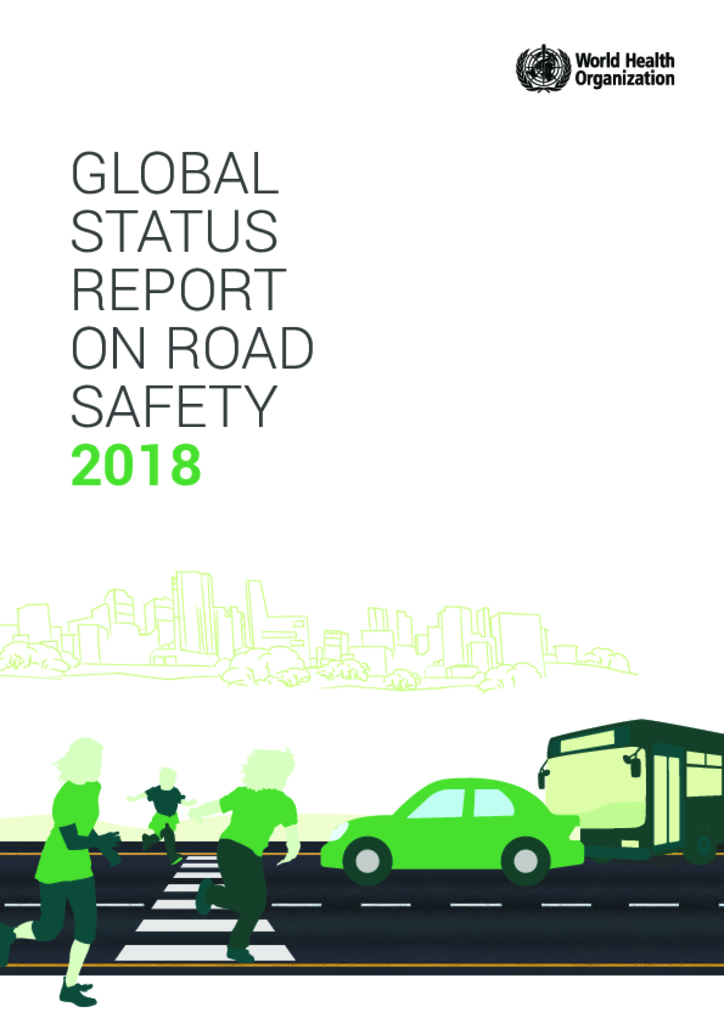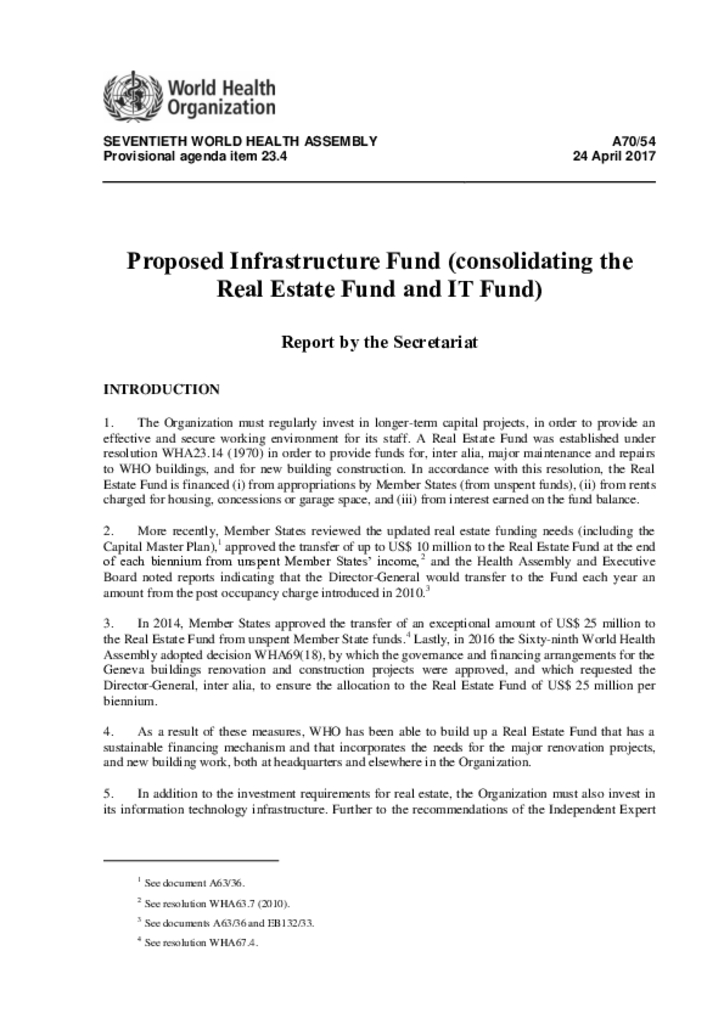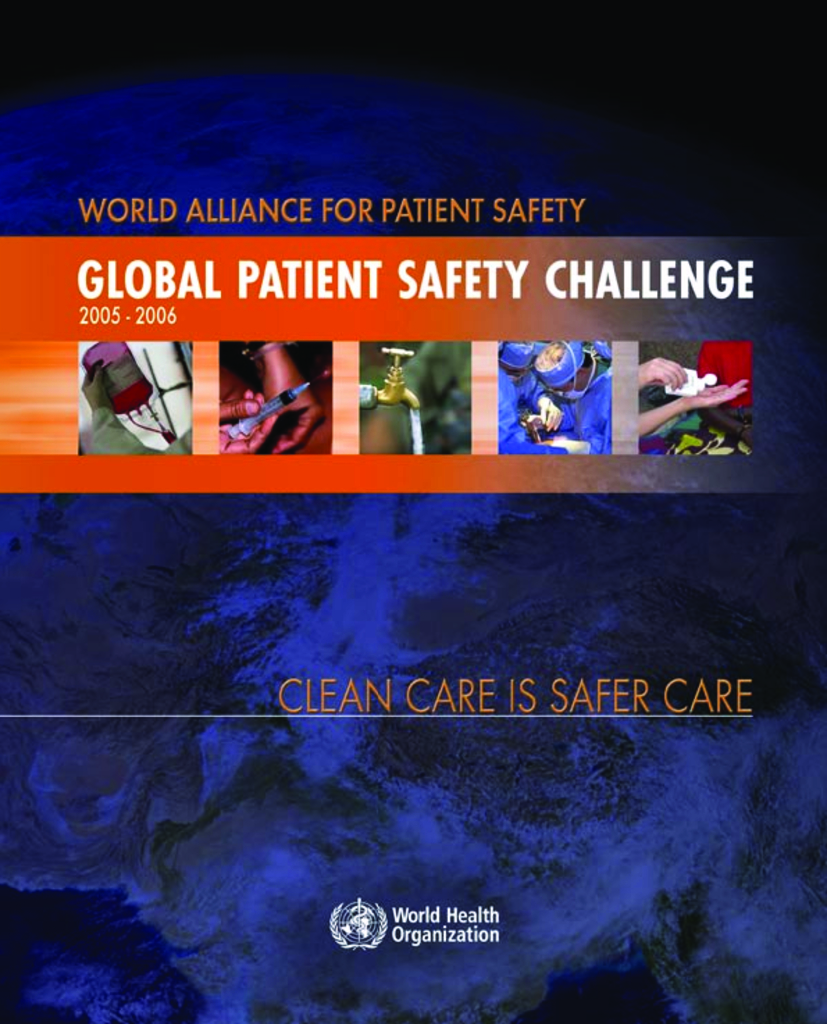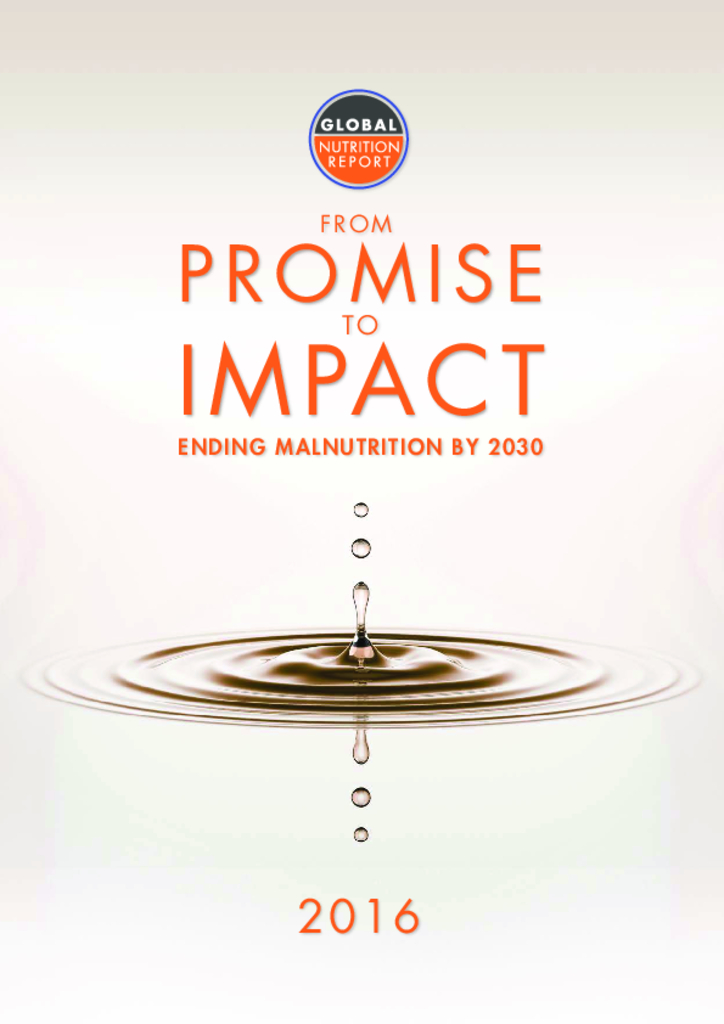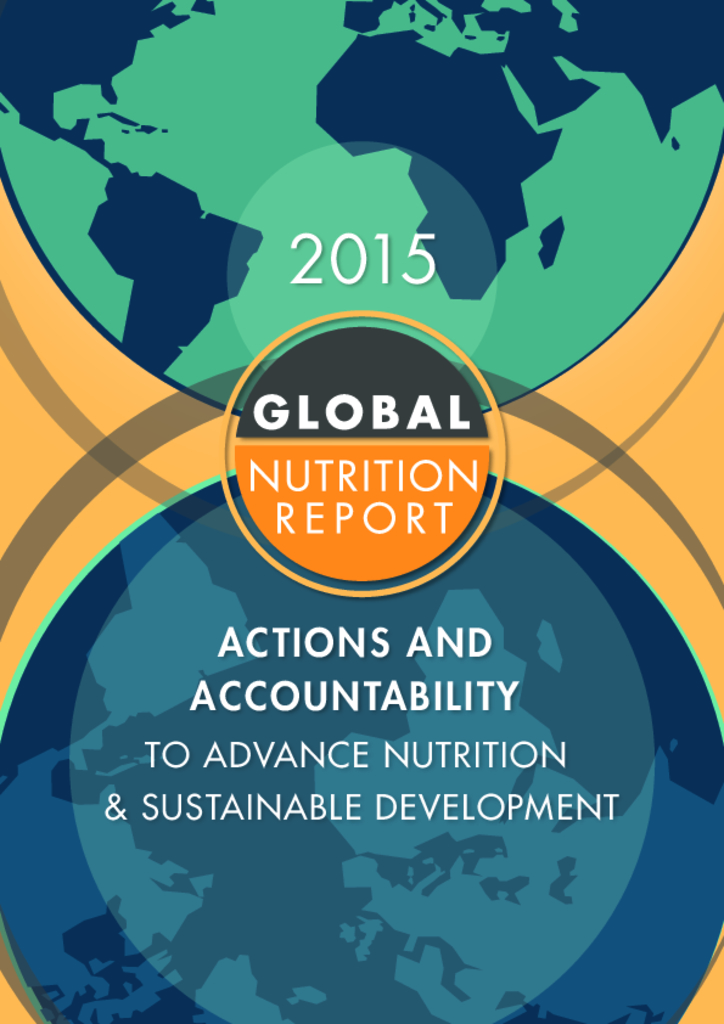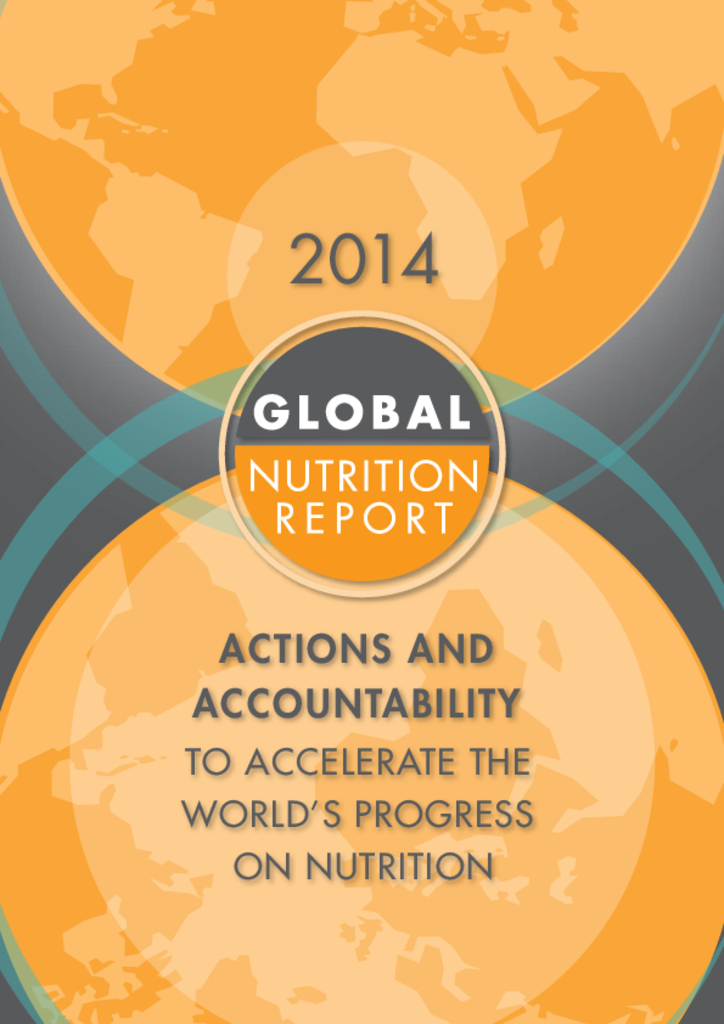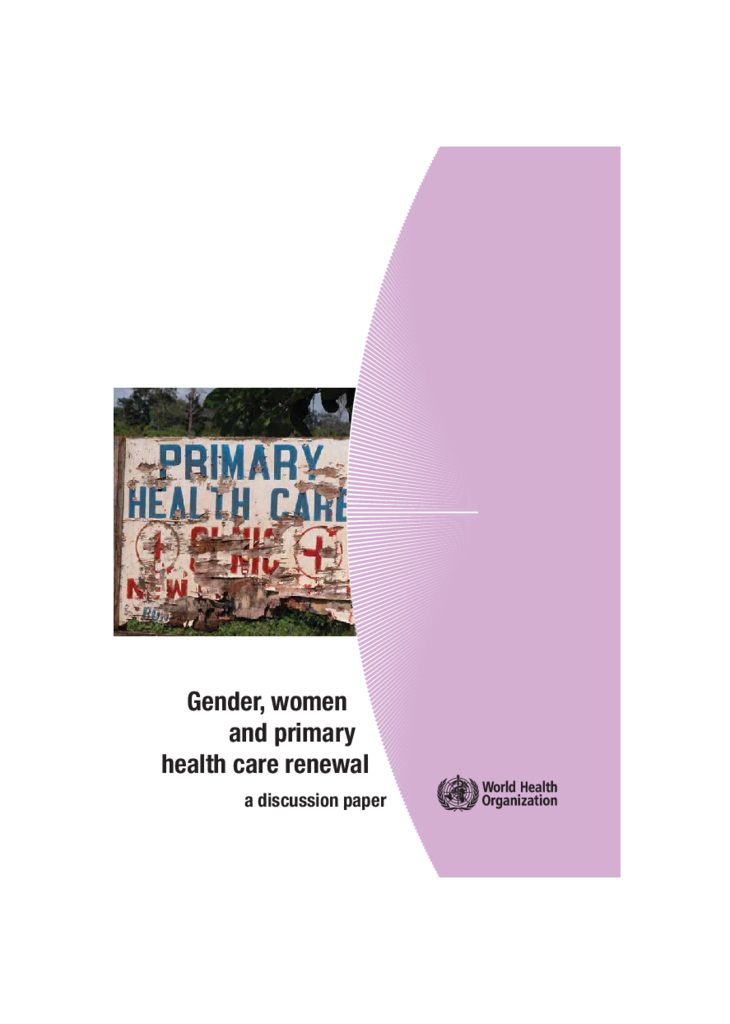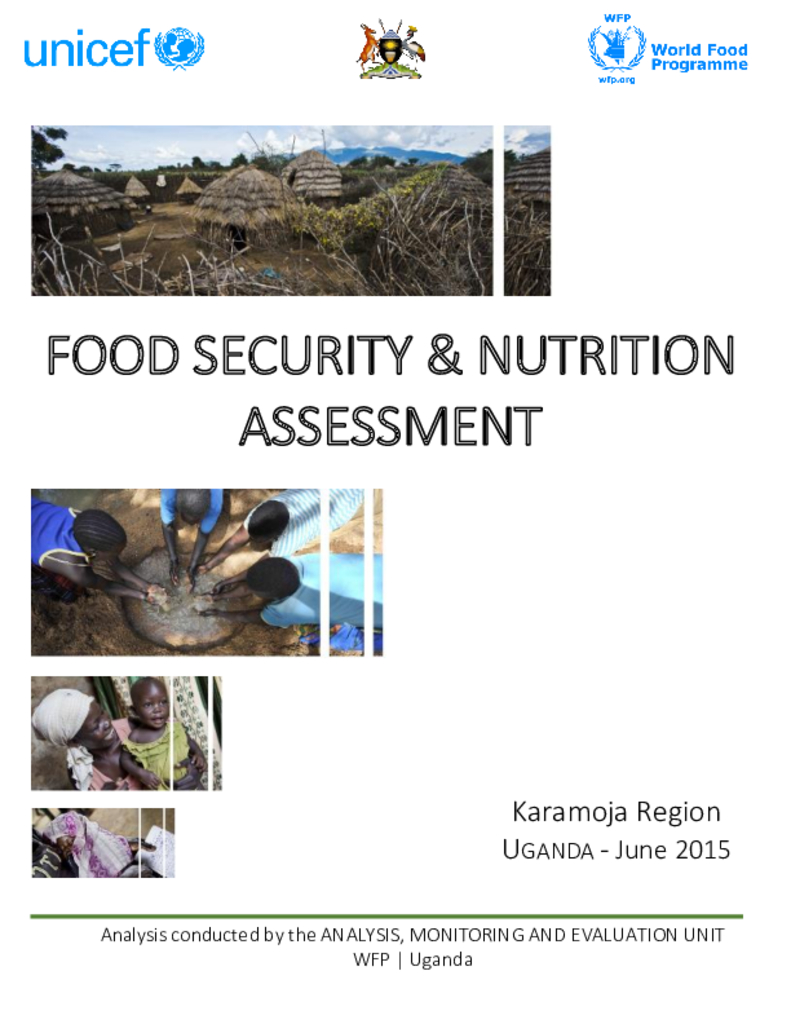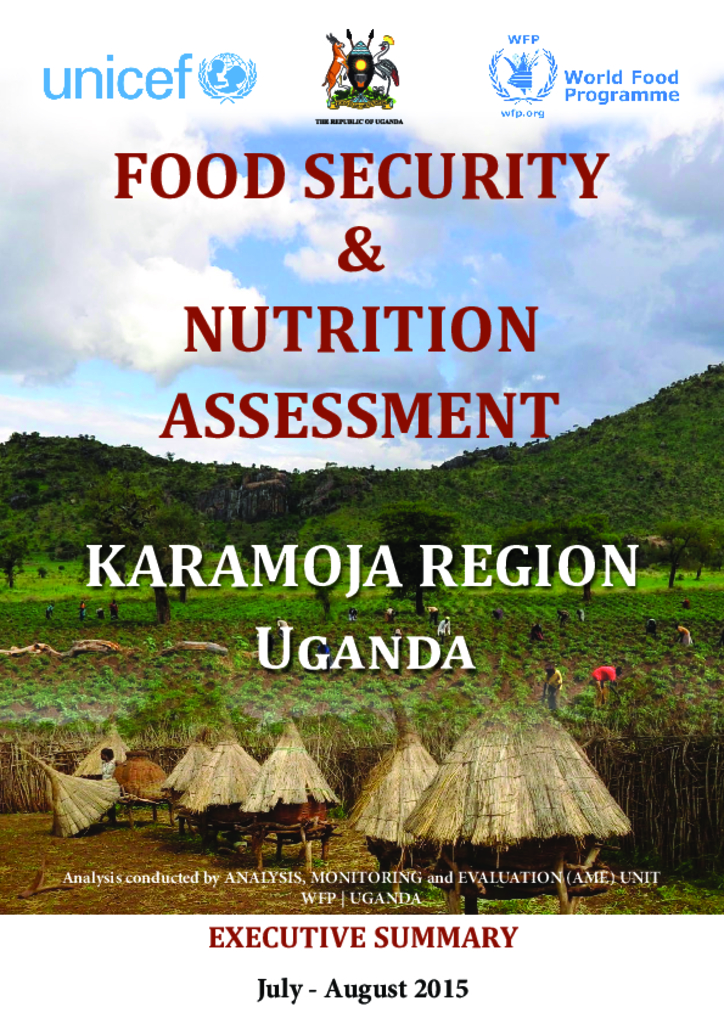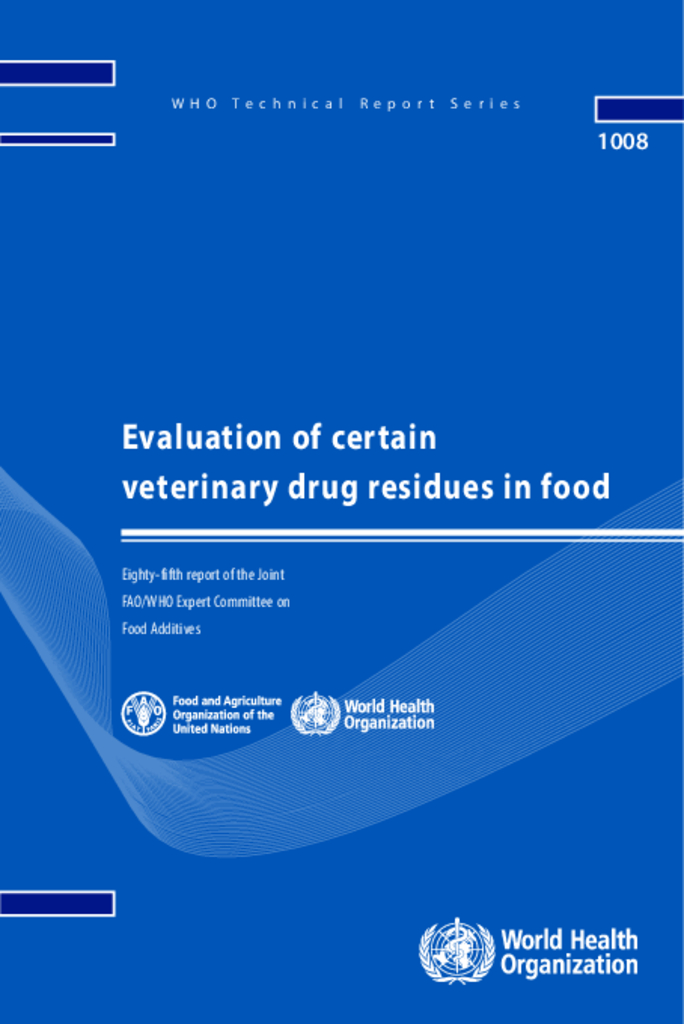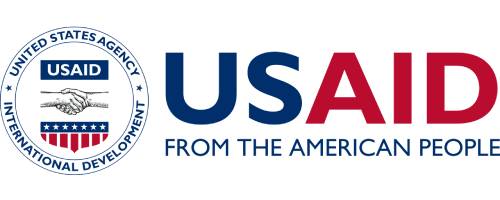The Global status report on road safety 2018, launched by WHO in December 2018, highlights that the number of annual road traffic deaths has reached 1.35 million. Road traffic injuries are now the leading killer of people aged 5-29 years. The burden is disproportionately borne by pedestrians, cyclists and motorcyclists, in particular those living in developing countries. The report suggests that the price paid for mobility is too high, especially because proven measures exist. Drastic action is needed to put these measures in place to meet any future global target that might be set and save lives.
The Organization must regularly invest in longer-term capital projects, in order to provide an effective and secure working environment for its staff. A Real Estate Fund was established under resolution WHA23.14 (1970) in order to provide funds for, inter alia, major maintenance and repairs to WHO buildings, and for new building construction.
In accordance with this resolution, the Real Estate Fund is financed (i) from appropriations by Member States (from unspent funds), (ii) from rents charged for housing, concessions or garage space, and (iii) from interest earned on the fund balance.
The Global Patient Safety Challenge with the theme “Clean Care is Safer Care” means working worldwide to assist countries to reduce the burden of health care associated infection. The challenges are enormous but so are the rewards: saving lives, improving patient safety, and making life better for countless millions of patients and their families.
Few challenges facing the global community today match the scale of malnutrition, a condition that directly affects one in three people. Malnutrition manifests itself in many different ways: as poor child growth and development; as individuals who are skin and bone or prone to infection; as those who are carrying too much weight or whose blood contains too much sugar, salt, fat, or cholesterol; or those who are deficient in important vitamins or minerals. Malnutrition and diet are by far the biggest risk factors for the global burden of disease: every country is facing a serious public health challenge from malnutrition
The Global Nutrition Report 2015 reminds us of the paramount importance of nutrition to human well-being and productivity. The underlying message of the report is that, unless governments, donors, and stakeholders commit to and make themselves accountable for improved nutrition in our societies, achievement of the Sustainable Development Goals presently being set for the next 15 years will be in jeopardy. We would do well to heed this warning
This report highlights the global nature of malnutrition and the successes and bottlenecks in addressing it. Malnutrition continues to affect the lives of millions of children and women worldwide. Every country is affected by some form of nutrition problem. This calls for countries to put in place appropriate strategies to overcome the problem in a concerted manner. But it isn’t an easy task. We all have many priorities and concerns that compete for our attention, our resources, our energy, and our political commitment. Ethiopia strongly believes that for a country to achieve sustainable human and economic growth, it must give special attention to the early stages of life as the foundation of human capital. We also believe that aligning and harmonizing partners’ plans with the government is critical to delivering results in the most efficient and effective manner. This necessitates not only more money for nutrition, but also more value for money
Door-to-door delivery services: How Joint Medical Stores cut its distribution costs
Gender equality is fundamental to the 2030 Agenda for Sustainable Development. But to focus our efforts in the right arenas, track progress over time and hold each other accountable, we need transparent data and analysis. That is why this report is an important milestone. Thanks to the efforts of Global Health 50/50, the gender dimensions of global health are increasingly clear. The report shows that, although gender is one of the most significant social determinants of health outcomes, the global health community remains largely gender-blind. This holds true both in ensuring gender parity in leadership across public, private and civil society organisations and in delivering gender-responsive programmes.
The goal of equality between women and men is a basic principle of the United Nations (UN), which is set out in the Preamble to the Charter of the United Nations. This commitment to promote gender equality and women’s empowerment was reaffi rmed in the Convention on the Elimination of All Forms of Discrimination against Women (CEDAW) in 1979; the Programme of Action of the International Conference on Population and Development (ICPD) in 1994; the Beijing Platform for Action in 1995; and in outcomes of other major United Nations conferences such as the World Conference on Human Rights in Vienna in 1993 and the World Summit for Social Development in Copenhagen in 1995. Then, the United Nations Economic and Social Council (ECOSOC) adopted in 1997 a resolution calling on all specialized agencies of the United Nations to mainstream a gender perspective into all their policies and programmes
Nearly half of households are currently food insecure with either borderline or poor Food Consumption Score, mainly due to the lean season that has seen a decline in food stocks at household level and contributed to food price rises (therefore reducing economic ability to purchase food).
Nearly half of the households are currently food insecure with either Borderline or Poor Food Consumption Score, mainly due to the lean season that has seen a decline in food stocks at household level and contributed to food price rises (therefore reducing economic ability to purchase food).
The Joint FAO/WHO Expert Committee on Food Additives (JECFA) met in Geneva from 17 to 26 October 2017. The meeting was opened by Dr Kazuaki Miyagishima, Director of the Department of Food Safety and Zoonoses of the World Health Organization (WHO), on behalf of the directors-general of WHO and the Food and Agriculture Organization of the United Nations (FAO).
